A new addition to the exhibition dedicated to Guercino (Cento, 1591 - Bologna, 1666), entitled Guercino. The Painter’s Craft scheduled in the Sale Chiablese of Turin’s Royal Museums from March 23 to July 28, 2024, produced by CoopCulture with Villaggio Globale International and curated by Annamaria Bava of the Royal Museums and Gelsomina Spione of the University of Turin. Also arriving at the exhibition venue, which is now being set up, is the altarpiece of the Madonna of the Rosary, measuring 3.78 x 2.55 meters and created by Guercino in 1637 for the church of San Domenico in Turin, which is a property of the Fondo Edifici di Culto managed by the Ministry of the Interior. An exciting addition to the already rich corpus of the exhibition, it is also fundamental in giving visitors an account of a very high moment in the art of the Master of Cento and the fortune he also enjoyed in Turin and at the Savoy court.
Even before 1623, in fact, Cardinal Alessandro Ludovisi had already paid homage to Duke Charles Emmanuel I of Savoy with the Return of the Prodigal Son, which Guercino had given him in 1617; while another work by the Emilian artist depicting the Samaritan Woman was listed in the 1635 inventory of the Savoy collections. The altarpiece in the church of San Domenico, currently being restored at the La Venaria Reale Conservation and Restoration Center, required a considerable investment of 600 ducatsoni from the Confraternita del Santissimo Rosario of Turin. It was Marquis Amedeo Dal Pozzo of Voghera who facilitated the contacts through the intermediary Ludovico Mastri, who was responsible for handling payments to the Emilian artist. The result is a work of great impact, characterized by a theatrical stage arrangement: the Madonna holds the Child and offers the Rosary to St. Dominic, flanked by St. Catherine, with a crowd of worshippers emerging from a wide archway in the background; in the upper part, three angels discuss a melody while a fourth angel seems to float over the scene with two cherubs. It is a Baroque spectacle of devotion that arouses deep emotion and admiration, and it can now be admired in its full grandeur thanks to the ongoing restoration.
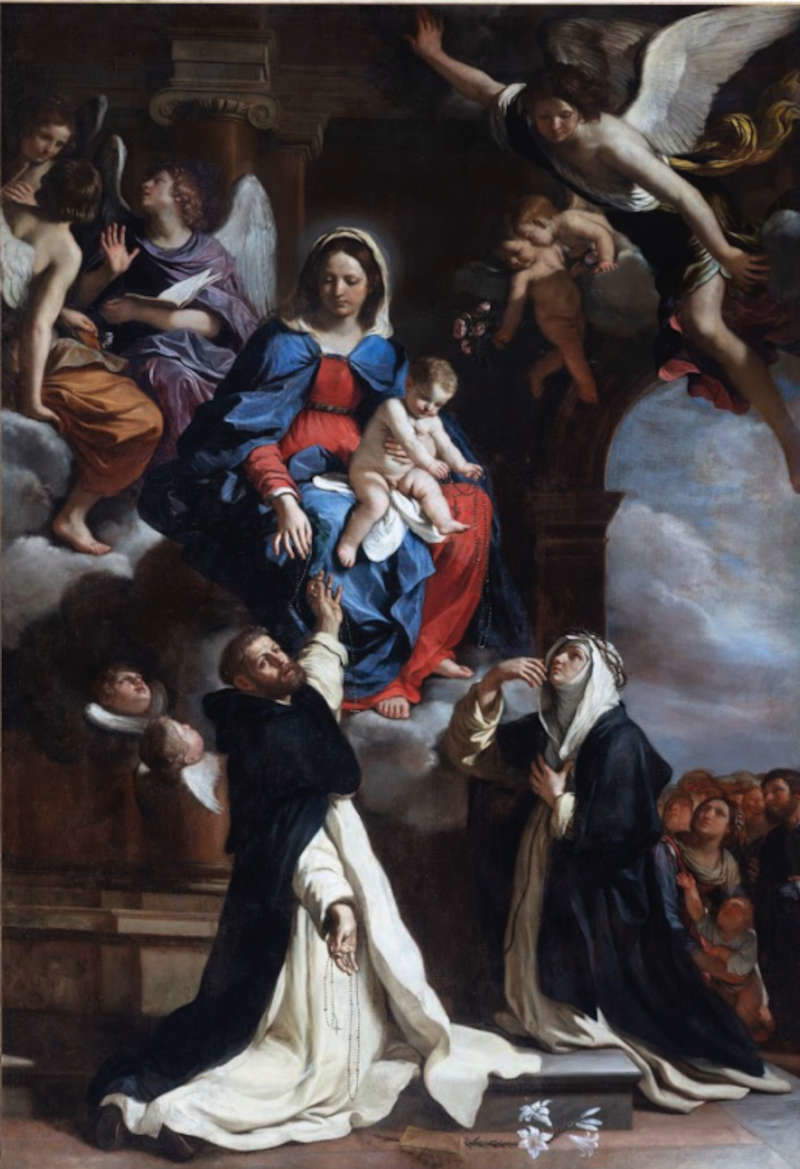
At the center of the exhibition is the profession of the painter in the 17th century exemplified on the figure of one of the major protagonists of the artistic scene of the time. Starting with the significant nucleus of paintings and drawings belonging to the collections of the Galleria Sabauda and the Biblioteca Reale, more than one hundred works by the Emilian master and coeval artists such as the Carraccis, Guido Reni and Domenichino will give life to a great fresco of the art system in the seventeenth century, guided by the talent of that “monster of nature and miracle to amaze” who was Guercino, according to the definition given by Ludovico Carracci, who was impressed by his talent. The important works brought together in Turin on the occasion are particularly significant for this narrative developed in ten sections. It starts with the presentation of the artist. Guercino appears, in his early forties, and with the tools of the trade, in the rare Self-Portrait from the Schoeppler Collection in London, which nicely introduces the itinerary. The training phase is indebted to the study of the works of great masters and the encounter with personalities that affect the maturation of an artist: for Guercino points of reference were in particular Ludovico Carracci, admired in Bologna but also in Cento, and on the Ferrara side Scarsellino and Carlo Bononi. “L’ Accademia del nudo” was to be the next phase: Guercino, now famous at home, opened his Academy in 1616, making it a point of reference for many young artists. In the exhibition, intense and evocative is the dialogue between the Master’s nude drawings and the Saint Sebastian treated by Irene (1619) from the Pinacoteca di Bologna. Requested by Jacopo Serra, cardinal legate of Ferrara and a refined patron of Guercino, the painting is of extraordinary quality because of the lively and intense naturalism typical of the Maestro’s poetics, which succeeds in translating the sacred event into everyday life. Before tackling the theme of the workshop and its dynamics, the exhibition recalls the stages of the painter’s affirmation and the geography of commissions, which always play a central role in an artist’s career.
In this context, the figure of Alessandro Ludovisi, archbishop of Bologna and from 1621 Pope Gregory XV, turns out to be fundamental. The latter had already known Guercino thanks to the mediation of Father Mirandola, a great promoter of the artist from Cento, and to the appreciation of Ludovico Carracci, thunderstruck, as we know, by the young artist’s painting and called by Archbishop Ludovisi to estimate the cost of the works he commissioned. Between 1617 and 1618 Guercino made four large canvases for Alessandro Ludovisi and his nephew Ludovico, exceptionally reunited after four centuries in the Turin exhibition: Lot and the Daughters from San Lorenzo in El Escorial, Susanna and the Old Men lent by the Prado Museum, the Resurrection of Tabita from the Uffizi Galleries-Palazzo Pitti, and The Return of the Prodigal Son from the Royal Museums. The Ludovisi cycle of canvases marks a turning point: with Gregory XV’s ascent to the papal throne, Guercino would move to Rome for a few years, receiving very important commissions. Showing the variety of commissions that sealed an artist’s fame, we find other significant paintings. These include: the splendid canvas with Venus, Mars and Love (1633) from the Estensi Galleries, purchased for Francesco I d’Este and included in the decorations of the “Chamber of Dreams” in the Ducal Palace in Sassuolo; Apollo escorting Marsyas (1618) from the Pitti Palace, a work that Malvasia recalls having been executed for the grand duke of Tuscany; and again the Assumption (1620), once in the Church of the Rosary in Cento, to which the painter was particularly attached. The workshop directed by Guercino, the result of the union between the Barbieri and Gennari families, was highly organized, with roles and methods exemplary of the system of the time. To highlight the practice of model repetition and the use of a repertoire of original ideas, the exhibition presents a number of significant comparisons: from the two versions of God the Father from the Galleria Sabauda and the Pinacoteca Nazionale in Bologna (both 1646), alongside theImmaculate Conception from the Pinacoteca Civica in Ancona (1656) to the striking comparison between St. Matthew and the Angel, a masterpiece in the Capitoline Museums (1622), and St. Peter freed from an angel, one of the prestigious loans from the Prado Museum. A series of valuable drawings by Guercino illustrates the creative process and the crucial moment of invention through the graphic medium: notable is the case of the Vestizione di San Guglielmo, highlighted by three of the more than 20 original preparatory drawings.
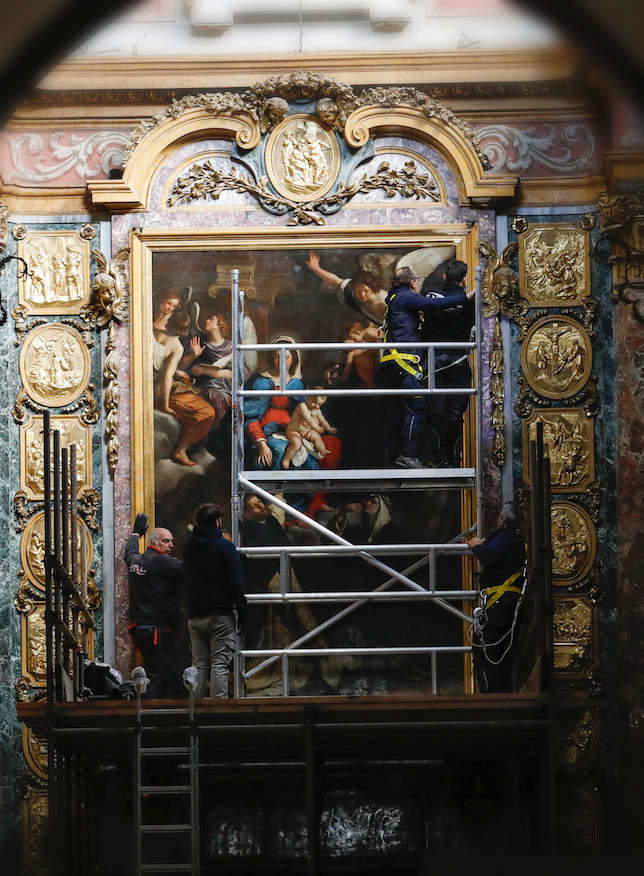
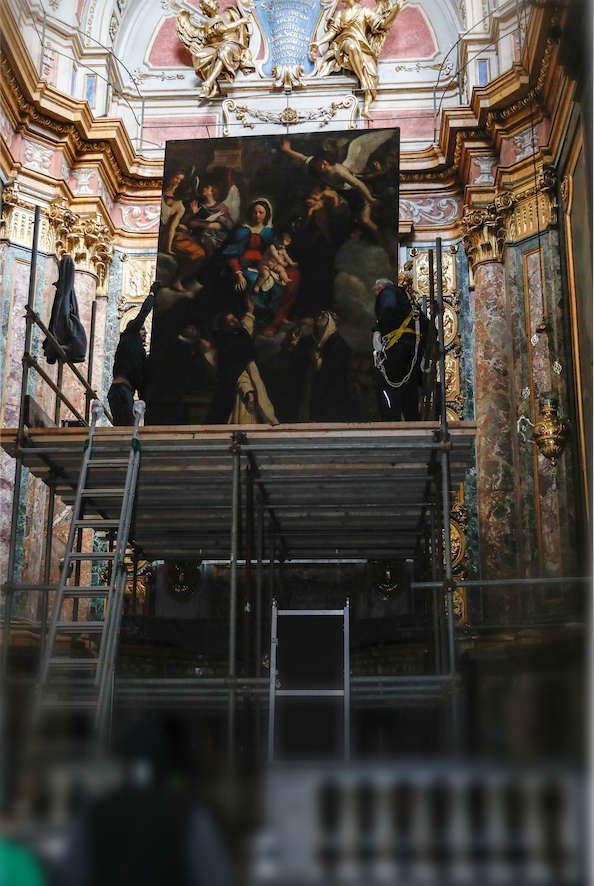 Transportation of
Transportation of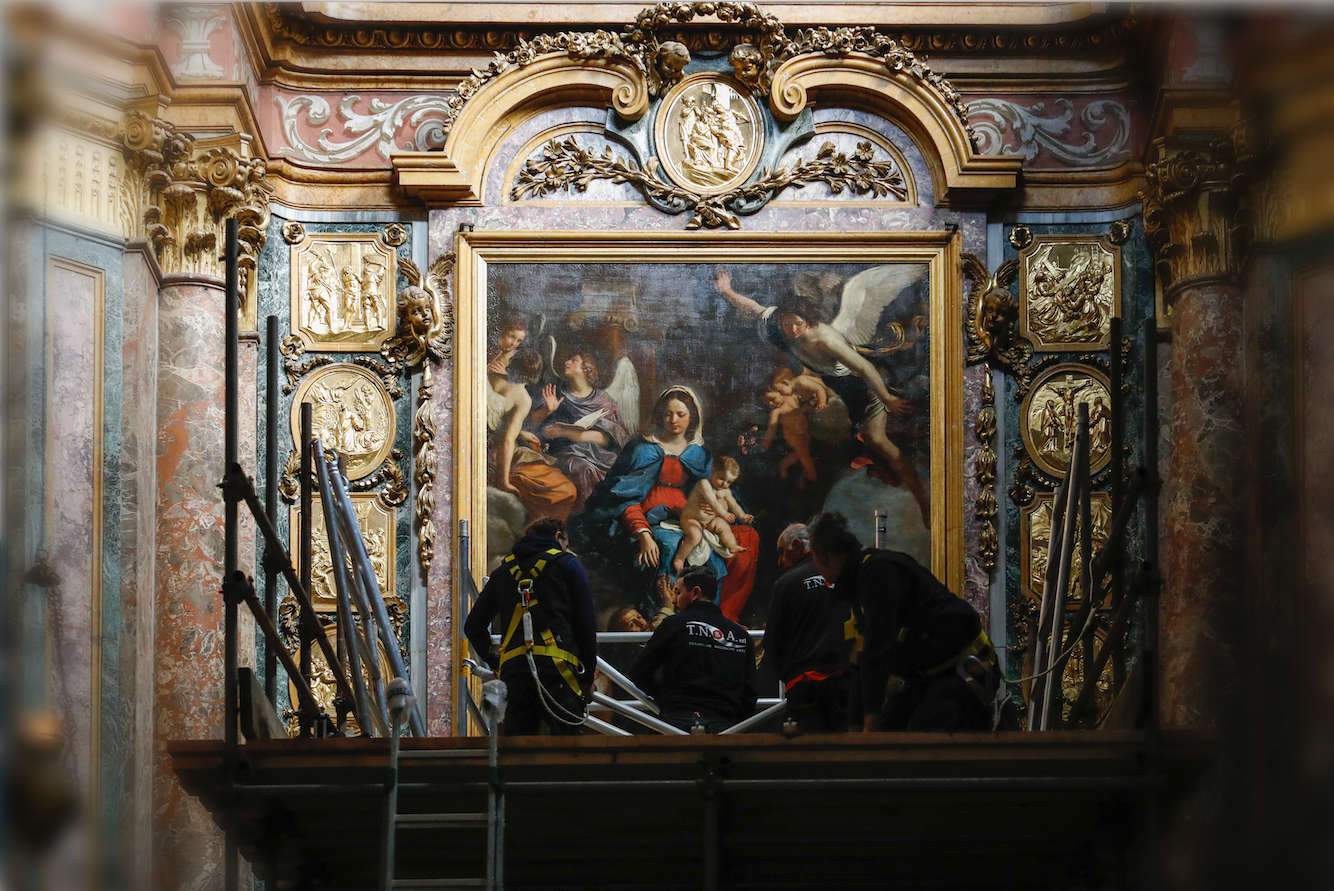 Transport of
Transport of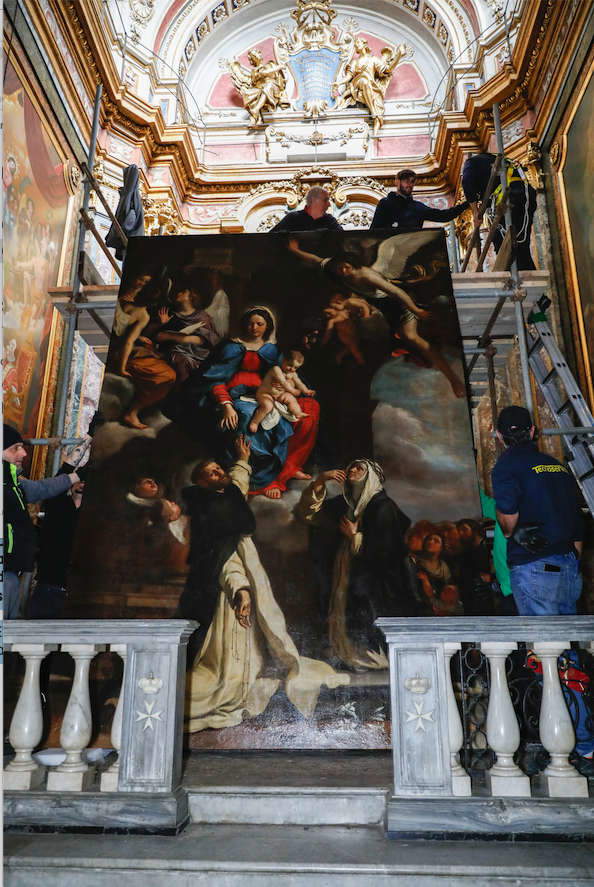 Transport of the
Transport of the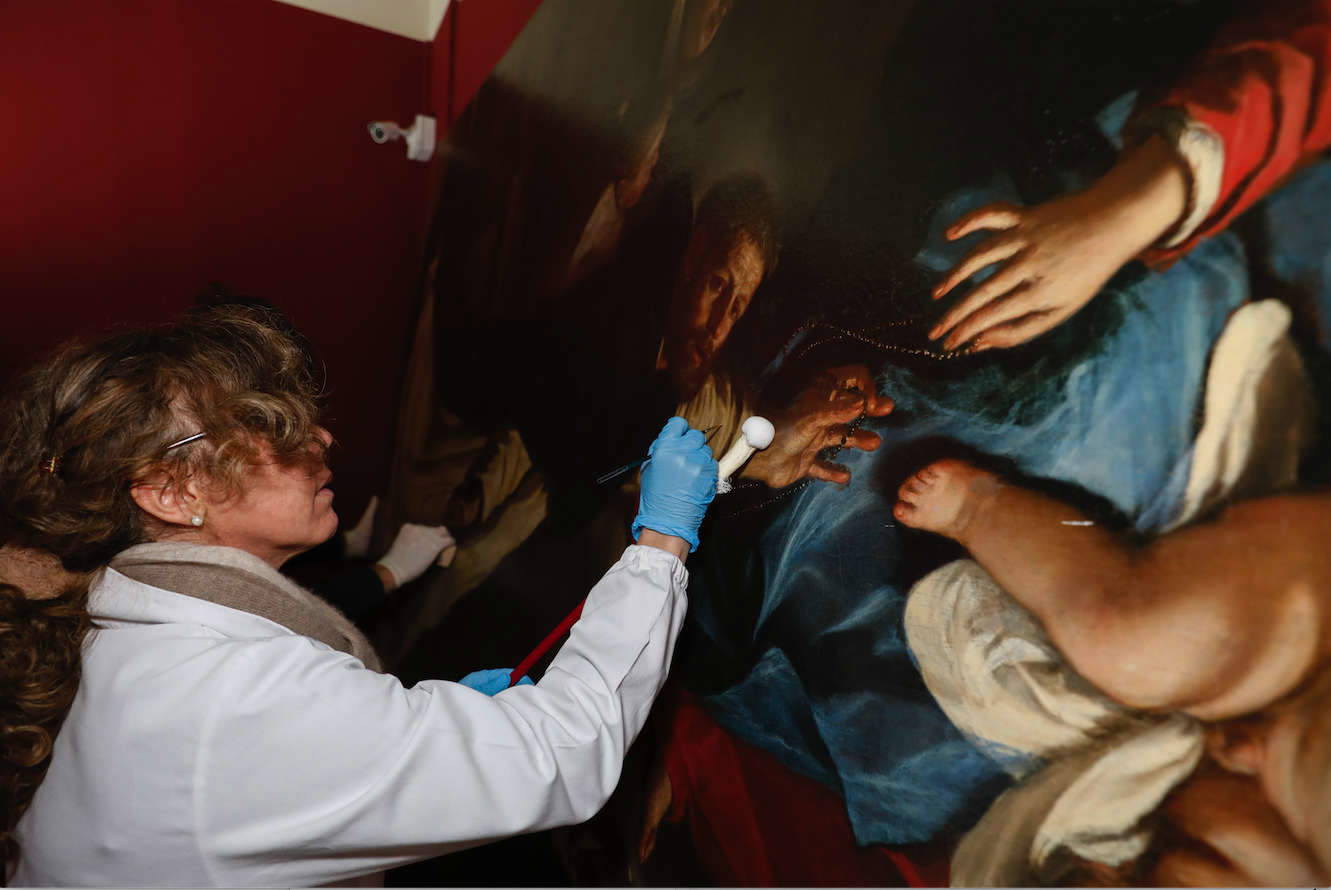 Transport of
Transport ofGuercino’s main competitor in the Bolognese market was Guido Reni, whose Saint John the Baptist in the Sabauda Gallery is exhibited, while testifying to the high cost of the works made by Giovanni Francesco Barbieri with the precious lapis lazuli and the higher price of paintings with full or multi-figure figures there is the Saint Francis Receives the Stigmata (1633) granted by the Novara diocese, or some of the important works in the Savoy collections such as Saints Gertrude and Lucretia (1645) and the Blessing Madonna (1651). The last three sections of the exhibition are devoted to some of the themes and subjects that were most adherent to the reality of the time or particularly successful and therefore most investigated by the painter and workshop. This is the case of the scientific innovations linked to the revolutionary Galilean thought that ignited the interest of patrons, intellectuals and artists including Guercino, who at the request of the Medici painted the famous Atlas holding the globe (Bardini Museum in Florence) and with a disenchanted gaze drew instead the Mago Brumio, evidence of popular beliefs still widespread. Then, the “grand theater of Baroque painting” with other masterpieces, including The Return of the Prodigal Son (1627-28) from the Galleria Borghese from the Roman Lancellotti collection, or Amnon and Tamar from the Galleria Estense in Modena. The seventeenth century exalts the art of emotional representation, with a focus on intense gestures and an engaging vision of events. Guercino stands out as a master of this aesthetic, both in the rendering of figures and in the elaboration of richly detailed scenarios. His ability to capture psychological tensions and dramatic passions emerges especially in portraits of mythological and historical heroines, conveying courage, dignity, and intelligence.
Finally, iconographic themes such as the Sibyls are explored in depth with an evocative comparison of four different depictions-Diana, Lucretia and Cleopatra, the latter the protagonist of a work in the Strada Nuova Museums in Genoa, imposing in size, and engaging in sensuality and modernity.
“Guercino,” write the curators, “masterfully stages the last act of tragedy, making the viewer participate and transporting him into the sublime emotion of the Baroque spectacle.”
Hours: Tuesday through Sunday from 10 a.m. to 7 p.m.
Fees: Full exhibition: € 15.00 ; Reduced exhibition: € 13.00
 |
| Turin, Guercino exhibition also features the large Madonna of the Rosary altarpiece. Photos of the transport |
Warning: the translation into English of the original Italian article was created using automatic tools. We undertake to review all articles, but we do not guarantee the total absence of inaccuracies in the translation due to the program. You can find the original by clicking on the ITA button. If you find any mistake,please contact us.